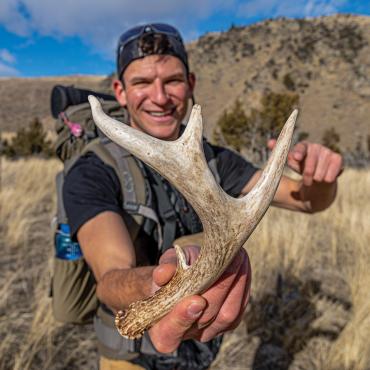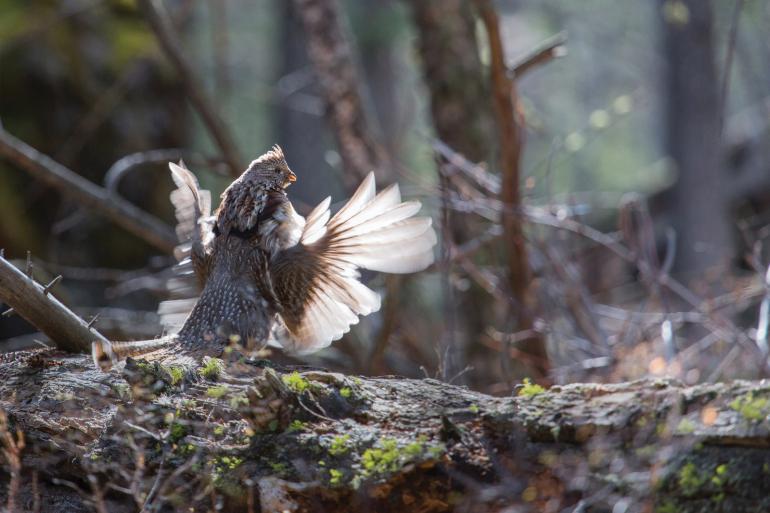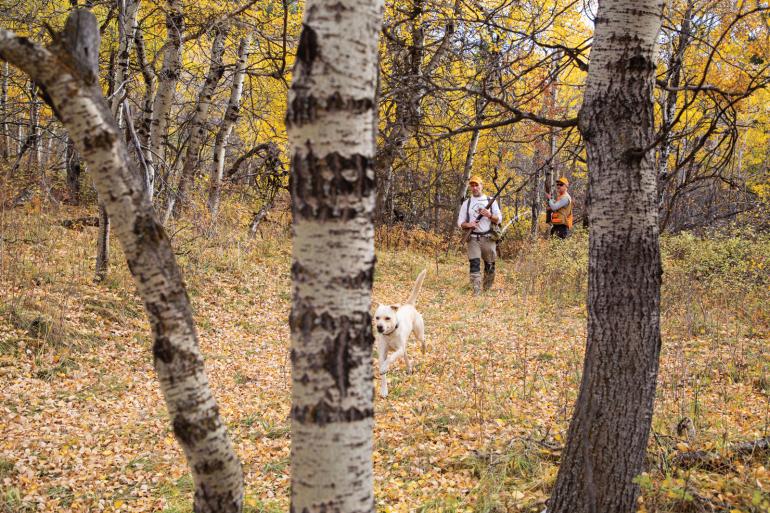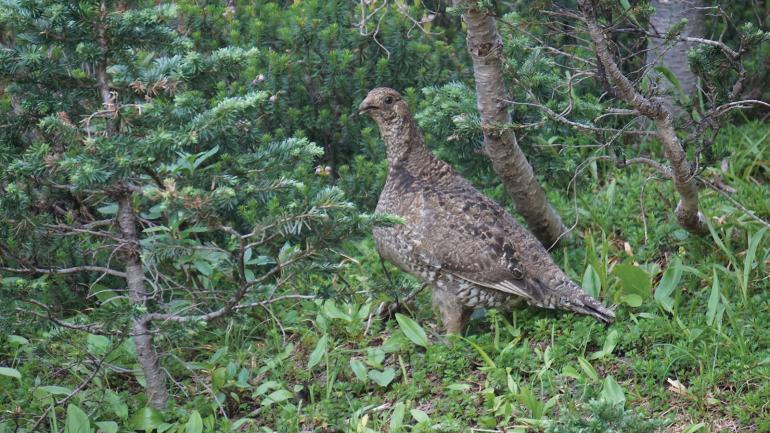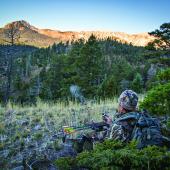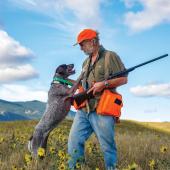Plumped Up
The basics of hunting "forest chickens" in southwest Montana.
It’s a hot September day, and grouse are flying off the trail. I’ve never seen anything like it—fat ruffed grouse flush around every corner, and I navigate my mountain bike carefully to avoid running them over. Gorged silly on huckleberries, they can barely waddle off the trail, let alone fly. Sitting ducks—if only I had a gun. Right then and there, I swore to myself I would buy a .410 pistol to keep in my biking hip pack, should I ever encounter a grouse Shangri-La again. Though not a particularly traditional method, the approach is a common one—opportunistic hunting. While it can be worth planning a full trip around these birds, one can be equally as effective just hiking in the woods or on trails all day, gun strapped to the pack should the prey happen to present itself. Regardless of the tactics, though, here’s a basic rundown on grouse hunting in southwest Montana.
Habitat
Mountain grouse—especially ruffs—tend to live in thick and nasty, low-elevation brambles. Anywhere with thick chokecherry, huckleberry, or snowberry patches is prime habitat; so too with alders, aspens, willows, and similar groves. When hunting grouse in dense cover, there are two effective ways to go about it. Either work slowly and methodically, looking for birds on the ground, or charge through the thickets, flushing them and watching where they land. Good shooters can knock the birds down “on the wing,” meaning while flying, but more novice hunters would be wise to wait for a clean shot when the bird is sitting on the ground or in a tree. A hunting dog can be useful for finding grouse, but is far from essential.
Once a grouse is flushed into a tree, it’s usually possible to take a handful of shots before the animal flies to a different branch—especially in an area with minimal hunting pressure.
In terms of species distribution, blue grouse tend to live in higher elevations, and in more open areas. When hiking a ridge, you’re likely to encounter ruffed grouse down low, but once the terrain opens up you can expect to see more blues. Sneaking up on either to within shotgun range can be a fun challenge, and a good exercise in stalking.
Behavior
If grouse are known for one thing, it’s their ignorance. It’s not uncommon to walk up on a bird unexpectedly, only to have it stand there and cluck at you. And once a bird is flushed into a tree, it’s usually possible to take a handful of shots before the animal flies to a different branch—especially in an area with minimal hunting pressure. However, it doesn’t take much pressure for grouse to wise up. If birds are flushing from a long distance, there’s a good chance they’ve already been shot at a few times. If that’s the case, it might be worth finding another area to hunt with virgin grouse. They also tend to hang out in groups—typically mothers with young of the year, which are nice and plump come September. Should you flush a handful, keep a close eye out to track as many as you can. With any luck, you can fill your bag limit in just a few minutes.
Gear
To take down a grouse, any 20- or 12-gauge shotgun will do the trick. Use a modified choke with size #6 to #8 shot. A revolver that can accommodate a .410 shotgun shell is also a popular choice for hikers or bikers looking to pack a little heat for a chance grouse encounter on the trail. Make no mistake, though, you have to get very close to the bird to knock one out with a .410 pistol. (Also note that a 12-guage at too close a distance can obliterate a ruffed grouse.) Bow hunters should carry one or two judo tips in their quivers while chasing big game. Judo tips look like little Mars rovers, with “legs” sticking out the front that catch on branches or grass so you won’t lose the arrow if you miss (in theory, anyway). A good day of unexpected grouse hunting can salvage the worst of elk- or deer-hunting days.
Regs
“Mountain grouse” season, for blue and ruffed grouse, is open September 1 through January 1, with a daily bag limit of three birds. Per usual, though, consult the FWP regulations for specifics and to confirm the regs in the area you’re planning to hunt.
Stalk managing editor Eli Fournier dreams of the day he’ll come across a pile of grouse on the trail again—this time, gun in hand.

